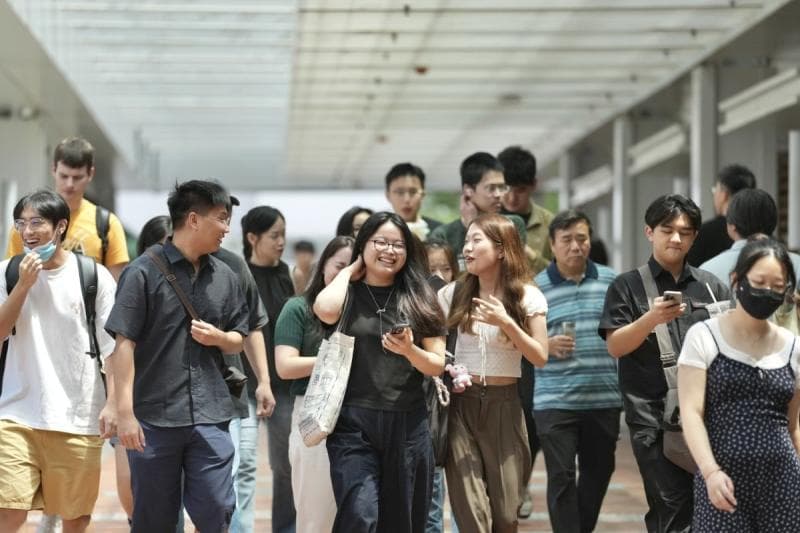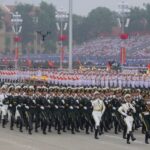Why student choices are shifting toward Asia
The global map of student mobility is tilting toward Asia. Hong Kong and Singapore sit at the center of that change. Hong Kong’s public universities increased quotas for non local undergraduates, yet first year international numbers still lag pre pandemic levels. Singapore is drawing growing interest on the back of strong rankings, a safe environment, and career pathways. Students from China, Southeast Asia, South Asia, and beyond now weigh cost, visas, and work options more heavily than distance or historic prestige.
- Why student choices are shifting toward Asia
- The numbers in Hong Kong: more places, a different mix
- Singapore’s pull: rankings, safety and jobs
- Costs, visas and safety shape decisions
- How Hong Kong is adjusting
- What students compare when choosing between the two cities
- Competition and cooperation between the hubs
- Key Points
Families from China and other regions once treated the United States and the United Kingdom as default choices. That assumption has weakened because of rising tuition and living costs, visa uncertainty, and a sharper focus on job outcomes. Hong Kong approved about 62,000 student visas in 2023, roughly 50 percent above 2019. Singapore hosted about 93,000 international students as of mid 2024, with many from China. Both cities see a chance to become first choice, not just backup plan.
The numbers in Hong Kong: more places, a different mix
Hong Kong’s eight public universities admitted nearly 5,600 non local first year undergraduates in the last academic year. Roughly 74 percent came from the Chinese mainland. Excluding students from the mainland and Macau, 1,365 non locals enrolled, which is 13 percent below the high point of 2018 to 2019. The government has already doubled the quota of non local undergraduates in recent cycles and plans to raise the ceiling on self financing non local places from 40 to 50 percent of local undergraduate places in 2026 to 2027.
The mix is slowly diversifying. The number of countries and regions represented rose from 68 to 82. New senders range from Slovenia and Suriname to Sudan. Universities also report a broader spread across Asia, with Indonesia and South Korea among the next largest source markets, each still under 5 percent of the non local cohort.
The University of Hong Kong leads the intake of overseas freshmen, followed by the Hong Kong University of Science and Technology and the Chinese University of Hong Kong. That pecking order mirrors global rankings and brand recognition that matter to applicants, scholarship committees, and parents.
Singapore’s pull: rankings, safety and jobs
Singapore’s higher education sector projects a clear message to international students. The city state promises high ranking universities, a predictable system, strong companies, and a safe, English speaking environment. Those factors carry weight for students who want global credentials without long visa queues or policy shocks.
Rankings and reputation
Two Singapore universities, the National University of Singapore and Nanyang Technological University, sit among the top tier in global tables and at or near the top in Asia. Their research output, industry partnerships, and graduate employment scores are strong. Across the region, Singapore competes with Hong Kong and leading Chinese universities for the attention of academically ambitious students.
Singaporean institutions also build prestige through performance in global competitions and moots, which reinforces their classroom reputation. A law team from Singapore Management University recently won both the Jessup International Law Moot Court in Washington and the Vis East arbitration moot in Hong Kong within the same weekend. Such wins help signal to applicants that they can train at a high level and gain international exposure.
Work and safety proposition
Singapore markets a straightforward path from study to work, especially for graduates with skills in technology, finance, and engineering. The presence of global firms in banking, logistics, biotechnology, and digital services offers internship pipelines and first jobs. The public safety profile of the city is another draw for families who want a stable environment for young adults.
Costs, visas and safety shape decisions
The tilt toward Asia reflects a practical calculation. Tuition and housing in the United States, the United Kingdom, and Australia have climbed faster than family incomes in many sending countries. Visa rules have tightened or become less predictable in several Western destinations. Many families now judge that a degree from a highly ranked Asian university, delivered in English and paired with good job prospects, offers better value.
Choices are widening within Asia too. Applications from Chinese students to Malaysia have surged since 2020 as parents seek lower fees and English language programs that award Western degrees through branch campuses. Japan has become more attractive because a weaker yen reduces day to day costs. European options with low or no tuition, such as public universities in Germany and France, are part of the mix for students who accept language study or live outside major cities. Middle East hubs like Doha also pitch American degrees at lower living costs through satellite campuses. Yet for many Chinese and Southeast Asian families, Hong Kong and Singapore remain closest to home and closest to future employers.
How Hong Kong is adjusting
Policy makers and university leaders in Hong Kong are acting on three fronts, more seats for non local undergraduates, steps to ease living costs, and clearer bridges from study to work. The strategy aims to keep high achieving mainland Chinese students while growing the share from Southeast Asia, South Asia, Central Asia, and beyond.
Policy moves on quotas and fees
Raising the cap on self financing non local places from 40 to 50 percent of local places in 2026 to 2027 sends a strong signal that Hong Kong wants a larger international intake. Officials have also stressed that tuition for non local students will not jump without warning, which matters for families planning budgets two or three years ahead.
Hong Kong’s Under Secretary for Education Jeff Sze Chun Fai has argued that fee stability is part of competitiveness. After outlining the rationale, he said:
“Keeping tuition fees stable helps Hong Kong’s universities appeal to students from overseas.”
Recruitment campaigns now reach deeper into the Association of Southeast Asian Nations and Belt and Road markets. Admissions teams have expanded school visits, alumni ambassador programs, and scholarship offers. Some universities are fast tracking applications from students who face policy disruptions elsewhere.
Housing and student life
Accommodation is the most pressing weakness. Several campuses have a student to bed ratio above five. A study in 2023 found that an average of six students competed for each bed at some institutions. Off campus rentals near Polytechnic University have reached more than HK$20,000 per month for larger flats, a level that deters students from India, Vietnam, and other key markets.
The government has launched a pilot to convert hotels and underused commercial buildings into student housing, with the first openings targeted for the 2026 to 2027 academic year. Fast approvals, clear safety standards, and transport links will decide whether the new supply keeps pace with enrollment growth.
Talent retention and jobs
Hong Kong has eased part time work rules for full time non local undergraduates, following an earlier trial for postgraduates. That change helps students cover expenses and build networks. A separate draw is Hong Kong’s integration with the Guangdong Hong Kong Macao Greater Bay Area (GBA), which connects graduates to technology hubs in Shenzhen and manufacturing bases across the Pearl River Delta. Cross border research projects, internships and applied labs can turn academic work into patents, products, and careers.
University leaders also warn against a narrow fix that chases headcount at the expense of outcomes. Wong Yuk shan, former chair of the Research Grants Council, has cautioned that quality must remain the anchor:
“The standard of British universities, once world leading, declined over the past 30 years because of funding cuts. Their overreliance on international student fees diluted educational quality,” he said. “We must avoid repeating this pattern.”
What students compare when choosing between the two cities
Applicants who weigh Hong Kong and Singapore tend to focus on a similar checklist. The relative weight of each item varies by family and field of study, yet the categories are constant.
- Academic rankings in the chosen subject and the strength of the department
- Tuition, scholarships and the real cost of living, including housing and transport
- Work rights during study, internship access, and the ease of switching to a work visa after graduation
- Industry links in finance, technology, health, logistics, and media
- Language of instruction, campus culture, and fit for student life
- Safety, social climate, and available support for international students
- Research funding, lab access, and pathways for entrepreneurship
- Proximity to home and the convenience of travel
Competition and cooperation between the hubs
Hong Kong and Singapore compete for the same students, yet their economies are not identical. In finance, both rank among the top Asian centers but with different strengths. Singapore has long excelled at wealth management, foreign exchange, and insurance. Hong Kong anchors equity markets and international banking and serves as a primary gateway to the Chinese mainland. That difference can be an asset for students who match their program choice to each city’s edge.
Distinct strengths in finance and law
Both cities operate under common law systems and host respected courts and arbitration institutions. Surveys of arbitration users consistently place Hong Kong, Singapore, and London at the top of preferred seats. In legal education, Singapore teams have raised their international profile through moot success. In business education, Hong Kong hosts global case competitions such as the HKUST International Case Competition, where students test strategies with industry mentors. These ecosystems give students access to judges, partners, and executives before graduation.
What it means for universities
Cooperation can grow amid competition. Joint degrees, split site research projects, aligned credit transfer, and internship exchanges across the two cities can appeal to students who want both footprints. Universities are also likely to compete on speed and service, from admissions timelines to visa support and housing allocation. The winners will show clear outcomes, not just strong rankings, and they will keep student welfare at the center.
Key Points
- Hong Kong increased non local undergraduate quotas, yet first year international numbers remain below pre pandemic levels
- About 5,600 non local first year undergraduates entered Hong Kong’s eight public universities in the last academic year, roughly 74 percent from the Chinese mainland
- Excluding the mainland and Macau, 1,365 overseas freshmen enrolled in Hong Kong, 13 percent below the 2018 to 2019 peak
- Hong Kong plans to lift the ceiling for self financing non local places from 40 to 50 percent of local places in 2026 to 2027
- The diversity of Hong Kong’s intake is rising, with 82 countries and regions represented
- Singapore attracts strong demand with top ranked universities, a safe environment, and clear study to work routes
- International student flows are moving toward Asia as families prioritize value, visas, and job outcomes
- Housing shortages and high rents are the biggest constraint on Hong Kong’s appeal to non local students
- Hong Kong is easing part time work rules for non local students and converting hotels and offices to dorms to address living challenges
- Both cities have distinct strengths, and their competition is likely to push universities to show clearer outcomes for graduates












